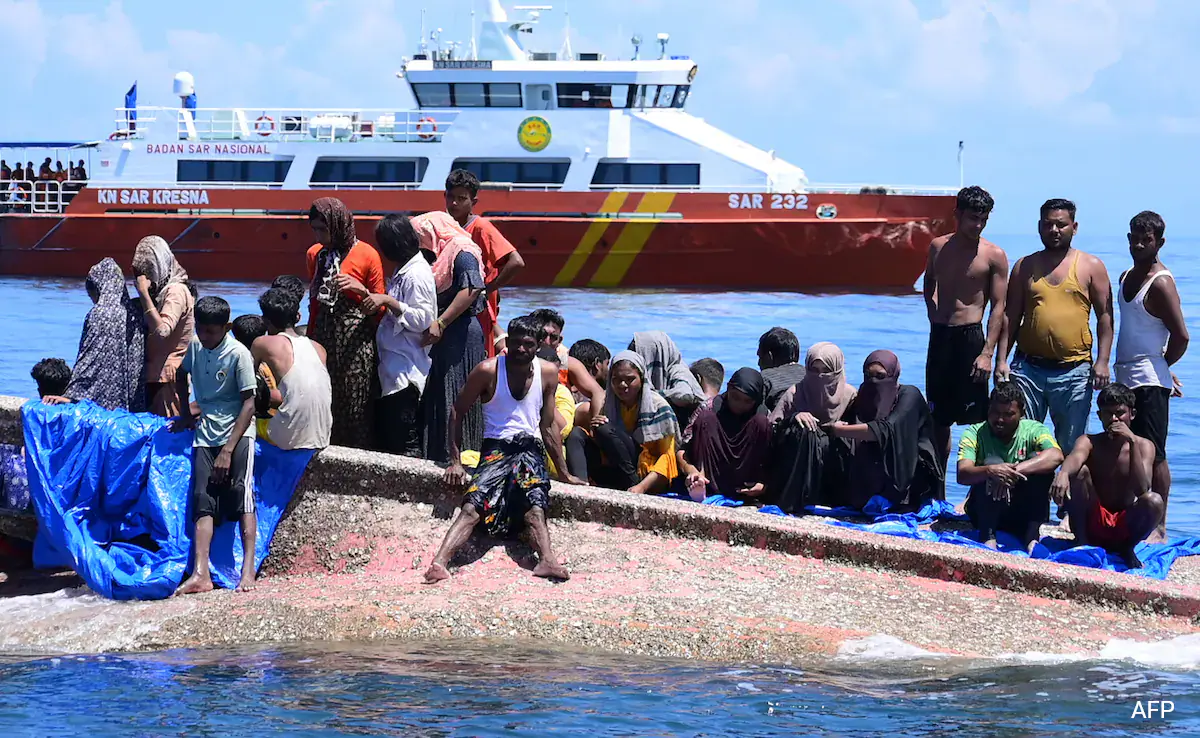
Drone assault kills dozens of Rohingya who were fleeing from Myanmar
Many witnesses said that scores of individuals, including families with children, were murdered in a drone strike on Rohingya who were fleeing Myanmar. The survivors were described as stumbling through mounds of bodies in an attempt to identify their injured and deceased relatives.
A diplomat, four witnesses, and campaigners detailed Monday’s drone strikes that killed families who were awaiting entry into Bangladesh, a neighboring country.
Among the casualties of the raid, which was the bloodiest reported assault on civilians in Rakhine state during the recent weeks of combat between insurgents and junta soldiers, were a heavily pregnant mother and her 2-year-old daughter.
Allegations of responsibility by the Arakan Army were refuted by the organization, as reported by three of the witnesses to Reuters on Friday. The military of Myanmar and the militia traded accusations. Reuters was unable to independently ascertain who was responsible for the incident or confirm the number of fatalities.
Social media users shared videos of bodies in mounds on muddy terrain, with their bags and luggage strewn all about. A witness to the aftermath reported seeing at least 70 dead, while three survivors stated that at than 200 people had perished.
The films’ approximate location, just outside the seaside town of Maungdaw in Myanmar, was confirmed by Reuters. The dates on which the videos were shot could not be independently verified by Reuters.
Mohammed Eleyas, 35, a witness, said that his 2-year-old daughter and expectant wife were hurt in the attack and subsequently perished. According to Eleyas, who spoke to Reuters from a Bangladeshi refugee camp, he was standing beside them on the coastline when drones started hitting the people.
He claimed to have heard the thunderous sound of bombardment many times. Eleyas claimed that after taking cover beneath the earth to defend himself, he awoke to find his wife and daughter in serious condition and several other family members dead.
Shamsuddin, a 28-year-old witness, claimed to have survived alongside his wife and infant kid. Speaking from a Bangladeshi refugee camp, he added that during the incident, “some people were shouting out from the pain of their injuries” and that “many lay dead.”
According to two witnesses and Bangladeshi media, boats transporting Rohingya refugees—a mostly Muslim minority that faces severe persecution in Myanmar—also sunk in the Naf River on Monday, killing scores more people.
In a statement, Medecins Sans Frontieres said that since Saturday, 39 persons who had crossed into Bangladesh from Myanmar had received treatment for wounds from gunshots and mortar shells, among other violence-related ailments. According to the statement, patients reported witnessing individuals being bombarded while looking for boats to cross the river.
A representative for the UN High Commission for Refugees stated that although it was unable to verify the precise number or circumstances of civilian casualties in Maungdaw, the organization was “aware of the deaths of refugees from the capsize of two boats in the Bay of Bengal.”
GUESSING IN THE AREA
In Myanmar, where Buddhism predominates, the Rohingya have long faced persecution. Following a military-led operation in 2017 that the United Nations claimed was done with the intention of genocidal purpose, over 730,000 of them left the nation.
Since the military overthrew a democratically elected government in Myanmar in 2021, the country has been in chaos as extensive armed conflict resulted from huge demonstrations.
The Arakan Army, one of several armed factions battling, has made significant gains in the north, which is home to a sizable Muslim community, and as a result, Rohingya have been fleeing Rakhine for weeks.
The largest Rohingya town was destroyed by the militia in May, according to earlier reports from Reuters. Maungdaw, which is besieged by the insurgents, is now the only significant Rohingya settlement remaining outside of the deplorable camps for internally displaced people further south. The organization refuted the accusations.
Actor networks denounced the assaults this past week. A top diplomat from the West claimed to have verified the information.
The UN ambassador of Canada and a former special envoy to Myanmar, Bob Rae, wrote on X on Wednesday, saying, “I’m sorry to say, these reports of hundreds of Rohingya killed at the Bangladesh/Myanmar border are accurate.”
In a message on its Telegram channel, Myanmar’s government placed the responsibility on the Arakan Army.
The militia disclaimed any accountability. Arakan Army spokesman Khine Thu Kha told Reuters that “our investigation shows that family members of terrorists attempted to travel from Maungdaw to Bangladesh and the junta dropped the bomb because they left without permission.” Khine Thu Kha was referring to Muslims who have joined Rohingya armed groups that are fighting the Arakan Army.
SEEKING TO ACCESS SAFETY
Because the location and form of the beach and mountains matched file and satellite photos of the region, Reuters was able to authenticate the location of the films that went viral on social media.
One of the movies’ fence features matched the location’s file images. The films’ location matched Shamsuddin’s description of the region.
After the incident, Eleyas spoke about how his wife and daughter perished and how he frantically tried to get a boat to carry them to Bangladesh.
“We apologised to each other for any wrongs we may have done in our lives,” he remarked prior to his wife’s passing.
He claimed that he eventually located a tiny boat around midnight and used it to cross the border.
All Categories
Recent Posts
Tags
+13162306000
zoneyetu@yahoo.com



